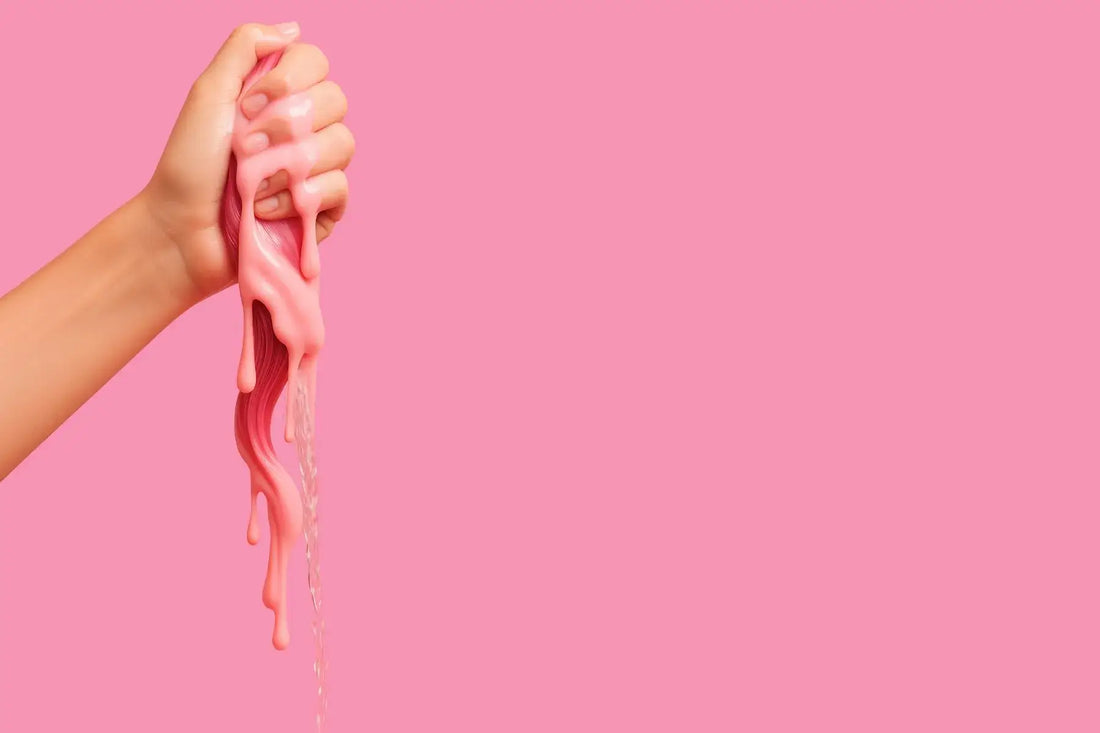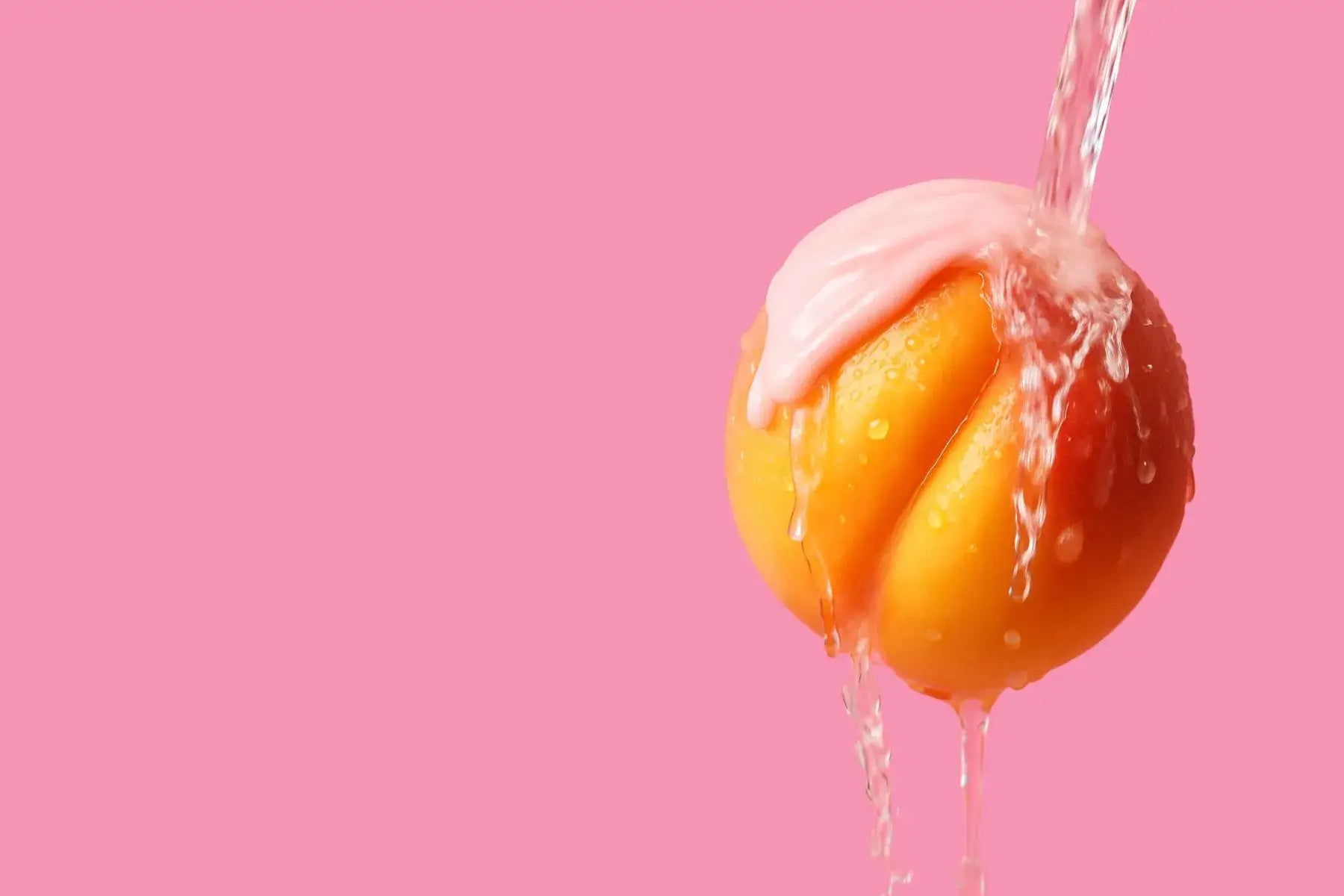
Is it necessary to rinse a hair mask?
Share
Yes, a hair mask needs to be rinsed off to be effective.
A hair mask is not designed to stay on the fiber after the application time. Even the most luxurious treatments require meticulous rinsing to deliver their benefits without weighing hair down. Not rinsing a mask hinders its action. Here's what you need to remember:
- Unless explicitly stated otherwise, hair masks are always rinsed off. The rare "no-rinse" treatments are formulated differently (lighter textures, non-occlusive film-forming active ingredients). In the absence of a clear indication, rinsing is imperative.
- Not rinsing prevents the active ingredients from penetrating the fiber properly. Instead of healing, the mask remains on the surface, forming a film that attracts dust, blocks oxygenation and weighs hair down.
- Precise rinsing optimizes the effects of the treatment. It eliminates excess matter, closes the hair's scales and reveals its natural shine. Warm then cool water is ideal for this purpose.
- Even after a long application, rinsing remains essential. Some masks, such as those formulated for application before shampooing or as a night-time treatment, require gentle rinsing after application. This removes the rich agents (oils, ceramides, plant butters) without leaving residues.

The hair mask is often perceived as an exceptional treatment, reserved for damaged or sensitized hair. But the way it's applied, and how it's rinsed off, are often overlooked.
Is it necessary to systematically rinse out a hair mask ? Can it be left on indefinitely to "prolong" its effects? Behind these seemingly simple questions lies a precise, almost subtle hair mechanics, where every gesture counts.
For those who consider hair care to be a refined ritual - in the image of the Madame d'Alexis philosophy - it becomes essential to understand not only the active ingredients of a hair mask, but also the exact impact of rinsing it off on the fiber and scalp.
Is rinsing the hair mask mandatory?
What capillary logic says
A mask is neither a finishing cream nor a styling balm. It's a deep treatment designed to act temporarily on the hair fiber, then be removed.
Not rinsing it means :
- block hair'snatural oxygenation,
- create a cosmetic overload on the fiber,
- compromise the hair's lightness and shine,
- unbalance the scalp (particularly in the event of prolonged contact).
Rich textures, especially those based on ceramides, oils or plant proteins, require meticulous rinsing to free the hair, reveal its substance, and let the active ingredients do their work without a "leaden" effect.
Can a hair mask be left on overnight?
There are indeed extended rituals. Pre-shampoo masks, like the one from Madame d'Alexis, are formulated to last a long time, sometimes several hours.
But here again, the key is to rinse after application. Why should you do this? Because beyond a certain threshold, hair no longer "sets". It saturates. And what was a treatment becomes an occlusive film, robbing the fiber of its natural suppleness.
Not to rinse is to risk :
- loss of volume,
- a greasy or sticky feel,
- increased scalp sensitivity.
A mask, however luxurious, is best appreciated when rinsed thoroughly. It's in this final step that skincare becomes art.
How do I rinse a hair mask?
Rinsing a hair mask is a gesture that deserves more attention than you might think. Behind this seemingly simple step lies the effectiveness of the entire treatment.
The wrong gesture can ruin the quality of even the most noble mask. In our vision of skincare, every phase counts - and rinsing is the final signature of a well-executed ritual.
Common mistakes to avoid
To save time, or simply because they're automatic, certain mistakes are often made. They alone explain the failure of a well-chosen treatment.
- Rinse incorrectly or too quickly: Leaving even invisible residues weighs hair down and dulls the fiber.
- Deliberately leave a little product on: Contrary to popular belief, this doesn't improve hold or hydration. Rather, it encourages build-up and imbalance in the scalp.
- Apply too much product: Too much makes rinsing laborious and promotes saturation. A fine, well-distributed texture is better than a heavy coating.
The right gesture for effective rinsing
Ideally, rinsing should be considered as a treatment in itself. You don't remove the mask, you reveal it.
- Start with lukewarm water to loosen residues and smooth the fiber.
- Finish with cooler water to close the scales and lock in shine.
- Comb lengths under water to distribute the treatment evenly and facilitate removal.
- If the mask is very rich, a second gentle shampoo may be necessary, especially on fine hair.

Do all hair masks need to be rinsed off?
The answer is nuanced. Not all are equal, and not all are used in the same way.
No-rinse masks: for what uses?
Some masks, also called finishing care, are designed to be left on the fiber.
- Thermo-protective masks: applied before blow-drying, they form a light film.
- Day formulas, enriched with non-greasy film-forming agents.
- Fluid texts for touch-ups, halfway between skincare and styling.
These products are often more concentrated, but in less nourishing formats. They can be used on a daily basis, as a complement, but do not replace a genuine deep-cleansing treatment.
Adapt rinsing to hair type and treatment chosen
The choice of rinse depends closely on the hair profile:
- Fine hair: fears excess. Rinsing should be methodical, even accompanied by a quick shampoo to avoid a flat effect.
- Dry, curly or texturedhair: tolerates residue better, but risks getting bogged down if the mask is too rich or too frequent.
In any case, a well-formulated treatment is easy to remove. This is also where the sophistication of a high-end mask lies: deep action without ever weighing down the skin.
Hair masks: mistakes to avoid
Like many of us, I've come away from a salon or home hair treatment with a strange feeling: my hair is nourished, but lacks shine. Heavy, almost frozen.
Over time, I came to understand that it wasn't the mask itself that was the problem, but rather its misuse. A hair mask, especially when formulated with the utmost care, requires precise, informed application that respects the fiber.
Here are the most common mistakes to avoid, the ones that turn a luxurious treatment into a hair faux pas.
Don't choose your mask at random
A mask is not a standard product. It is chosen according to :
- hair type (fine, thick, curly, color-treated, dry, greasy...),
- fiber condition(dehydration, breakage, loss of elasticity, dulling),
- time of application (pre-shampoo or post-shampoo).
A moisturizing mask restores suppleness and elasticity. A repairing mask acts on keratin cohesion. A nourishing mask, enriched with fatty substances, targets damaged ends.
Unlike a conditioner - designed to detangle and smooth - a mask treats hair in depth. It doesn't replace, it completes.
Thinking that "the longer you leave it, the better it is".
It's a common misconception. Prolonged exposure can be beneficial... but only up to a point. Beyond that :
- the fiber becomes saturated,
- assets stop penetrating,
- hair becomes dull, sticky and lacks movement.
What's best? Respect the recommended application time, or opt for a long application followed by a perfect rinse. A good mask knows how to be forgotten once removed - not felt with every touch.
Apply the mask too high on the roots
It's a common reflex, especially with creamy textures. However, with a few exceptions (such as Scrub Madame by Alexis, designed for the scalp), a mask should be applied from mid-length to the ends. At the roots :
- it asphyxiates the follicles,
- stimulates excessive sebum production,
- disrupts the scalp microbiome.
What you gain in care, you lose in lightness.

Which mask is right for you?
Best practices
The choice of a hair mask is never neutral. It's the reflection of a detailed knowledge of your hair's needs - and of a certain requirement.
- Read the composition: Avoid occlusive silicones for prolonged use. Choose formulations based on active plant ingredients and floral hydrosols.
- Search for targeted ingredients: Madame d'Alexis masks are water-free, enriched with hydrolats of Damask rose, chamomile and orange blossom.
- Some masks are applied before shampooing to prepare the fiber (night or transition care). Others are used after washing, to close the scales and set the shine.
A well-chosen mask transforms the material, without ever betraying it. It's a silent but decisive care.
In short: a mask needs to be rinsed off... but not just any old way.
Key points to remember
It may seem like a simple question. Does a hair mask need rinsing? The answer is categorical: yes, always, unless otherwise specified by the manufacturer. But behind this "yes" lies a more demanding truth: effective rinsing is an essential step in hair care, just like the choice of mask or the application time.
Not rinsing a mask means :
- prevent the fiber from breathing,
- leave residues on the hair,
- saturate the texture, at the risk of weighing hair down,
- deprive the scalp of its natural balance.
A good rinse doesn't remove the care - it reveals it. It frees the fiber from excess, allows the active ingredients to work deep down, and restores the hair's original shine. Warm water opens the scales; cool water closes them. This final gesture is both technical and sensorial. It transforms texture into substance, care into result.
To remember:
- Unless it says "leave-on", a hair mask should always be rinsed off.
- Leaving a mask unrinsed cancels out its benefits: the fiber becomes saturated and the feel dull.
- Controlled rinsing brings lightness, movement and shine, even to damaged hair.
- A well-formulated, well-measured and well-rinse treatment acts as a discreet but long-lasting cure for the hair.
In an age when we often confuse saturation with care, the hair mask demands sobriety: little product, controlled time and, above all, meticulous rinsing. It's in this right dosage that the effectiveness - and elegance of the gesture - lies.
